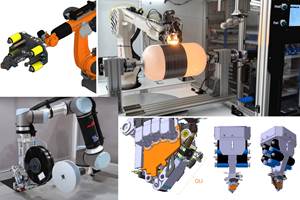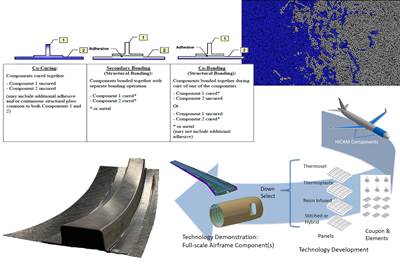Plasma treatment elevates aerocomposites surface preparation
CAMX 2024: Enhanced material performance and structural integrity, as well as reduced environmental impact is possible through Plasmatreat’s Openair-Plasma process.
Share
Plasma technology, like Plasmatreat’s (Hayward, Calif., U.S.) Openair-Plasma, aids in enhancing the adhesion and stability of bonded joints in large-format carbon fiber-reinforced polymer (CFRP) aerospace components, crucial for long-term performance and structural integrity.
According to the company, this is particularly true for large-area components molded from prepregs. Here, plasma is capable of eliminating solvent-based release agents used in molding prepregs like Frekote, simplifying demolding processes. This results in cleaner surfaces, reduced cycle times and improved structural uniformity, benefiting overall manufacturing efficiency.
Even traditional materials such as titanium and aluminum alloys used in rivets face challenges like corrosion in aircraft environments. Openair-Plasma treatment addresses these challenges through effective surface preparation, including micro-cleaning and activation. This ensures optimal application of anti-corrosion coatings, maintaining the reliability of critical assembly components.
Furthermore, PlasmaPlus nanocoatings represent a sustainable alternative to toxic hexavalent chromium (Cr6) primers through a plasma polymerization process — essentially a dry, chemical-free plasma coating method. By introducing a precursor, this technology not only offers effective corrosion protection but also enhances surface tension and coating adhesion without compromising environmental standards.
Plasmatreat notes that the integration of plasma technology signifies a significant shift towards sustainability and efficiency in aircraft manufacturing, promoting environmental responsibility and operational efficiency.
Related Content
-
Carbon fiber, bionic design achieve peak performance in race-ready production vehicle
Porsche worked with Action Composites to design and manufacture an innovative carbon fiber safety cage option to lightweight one of its series race vehicles, built in a one-shot compression molding process.
-
The next evolution in AFP
Automated fiber placement develops into more compact, flexible, modular and digitized systems with multi-material and process capabilities.
-
Manufacturing the MFFD thermoplastic composite fuselage
Demonstrator’s upper, lower shells and assembly prove materials and new processes for lighter, cheaper and more sustainable high-rate future aircraft.
Related Content
Carbon fiber, bionic design achieve peak performance in race-ready production vehicle
Porsche worked with Action Composites to design and manufacture an innovative carbon fiber safety cage option to lightweight one of its series race vehicles, built in a one-shot compression molding process.
Read MoreThe next evolution in AFP
Automated fiber placement develops into more compact, flexible, modular and digitized systems with multi-material and process capabilities.
Read MoreManufacturing the MFFD thermoplastic composite fuselage
Demonstrator’s upper, lower shells and assembly prove materials and new processes for lighter, cheaper and more sustainable high-rate future aircraft.
Read MoreCombining multifunctional thermoplastic composites, additive manufacturing for next-gen airframe structures
The DOMMINIO project combines AFP with 3D printed gyroid cores, embedded SHM sensors and smart materials for induction-driven disassembly of parts at end of life.
Read MoreRead Next
Welding is not bonding
Discussion of the issues in our understanding of thermoplastic composite welded structures and certification of the latest materials and welding technologies for future airframes.
Read MoreORNL nanofibers research strengthens bridge between fiber, matrix
A novel technique of depositing thermoplastic nanofibers enhances their strength, toughness and ability to withstand stress, removing the need for traditional methods like coatings.
Read More“Structured air” TPS safeguards composite structures
Powered by an 85% air/15% pure polyimide aerogel, Blueshift’s novel material system protects structures during transient thermal events from -200°C to beyond 2400°C for rockets, battery boxes and more.
Read More













